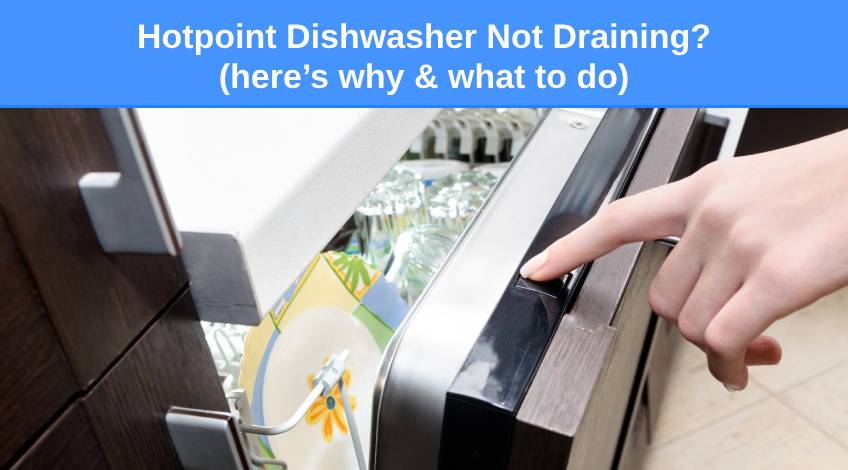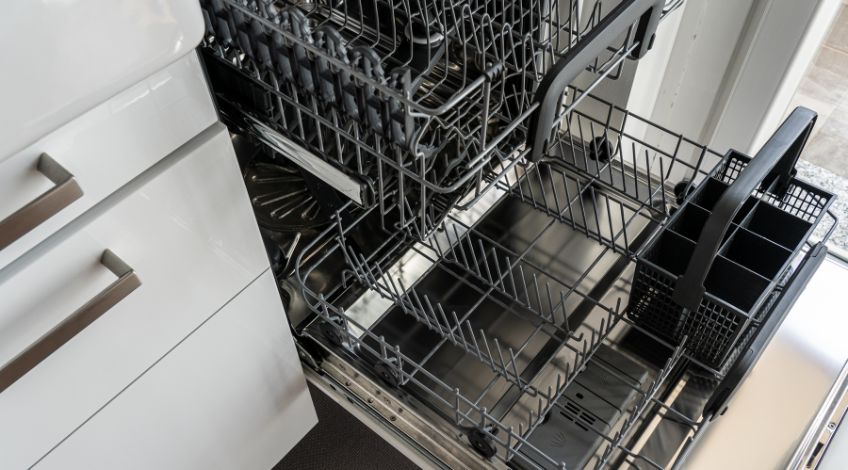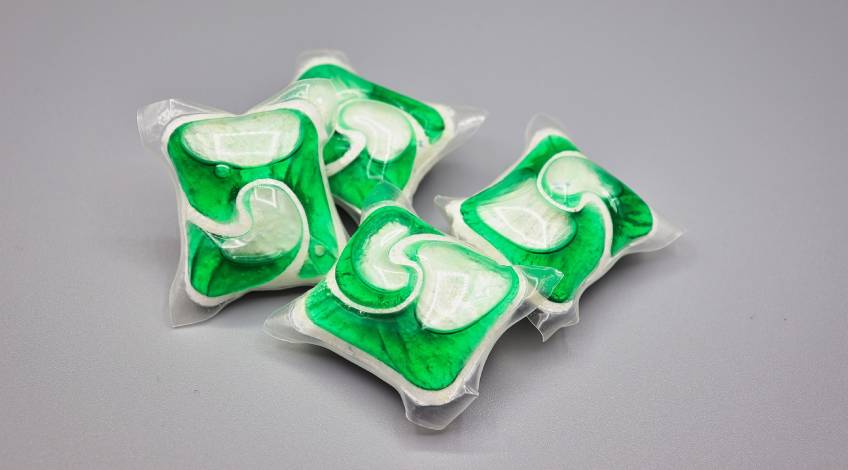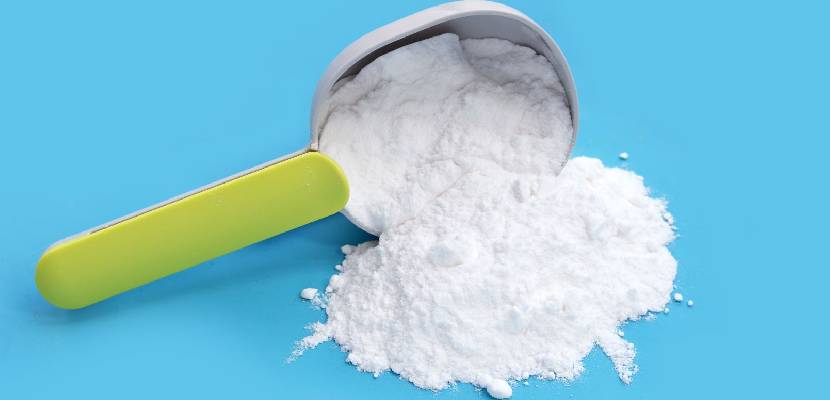
Hotpoint Dishwasher Not Draining? (here’s why & what to do)
If your dishwasher isn’t draining or doesn’t drain properly, you will find a large pool of water at the bottom of the tub after the wash cycle has completed. This water is often dirty and if left will begin to create a bad smell in your dishwasher.
In this article we take a look at the causes and solutions why your Hotpoint dishwasher isn’t draining. Many of these solutions are easy to fix without any DIY knowledge at all.
Which means you will have your Hotpoint dishwasher running properly again without having to spend a fortune getting it fixed.
How To Remove Excess Water From Your Hotpoint Dishwasher If It Doesn’t Drain Properly

Before we get into the causes and solutions, you will need to gain access to the bottom of the dishwasher’s tub. This can be difficult if it’s full of water, so before you start you’ll need to remove that pool of water from the bottom of the tub.
There are 2 ways to successfully remove this standing water which are;
- Using A Jug & Bowl
All you need to do is dip the jug or small cup into the pooling water and remove it into the bowl. You then repeat this process until all of the water is gone. This method works best for small amounts of standing water. - Using A Wet/Dry Vacuum
To remove the water using a wet/dry vacuum, you will need to ensure the wet filter is in place and then vacuum all of the water from the bottom of the tub. This works best for large amounts of water.
What Is Causing The Hotpoint Dishwasher Not To Drain?
There are several reasons why your Hotpoint dishwasher might fail to drain including;
| Probable Cause | Solution |
|---|---|
| Cycle Interrupted | Restart the cycle |
| Wrong Type Or Too Much Detergent Used | Ensure to only use the correct type of detergent in the correct quantity |
| Clogged Filter | Clean the filter |
| Clogged Or Damaged Impeller | Inspect the impeller and remove any blockage |
| Clogged Drain Hose | Remove any blockage from the drain hose |
| Blocked Waste Disposal Unit | Remove any blockages from the waste disposal unit |
| Blocked Air Gap | Remove any blockage from the air gap |
| Blocked Sink Waste Pipe | Remove any blockage from the sink waste pipe |
| Defective Drain Pump | Replace the drain pump if necessary |
| Defective Solenoid | Inspect and replace the solenoid if necessary |
| Stuck Check Valve | Inspect and replace the check valve if necessary |
Let’s take a closer look at each of these issues;
Interrupted Cycle
If the cycle gets interrupted for any reason, it can cause your Hotpoint dishwasher to fail to drain properly. The cycle could get interrupted due to a power outage or the cycle has been accidentally interrupted.
If this is the cause of the problem, all you need to do is restart the cycle to fix this issue.
Wrong Type Or Too Much Detergent Used

99 times out of 100 this is the cause of a dishwasher failing to drain properly. Dishwasher detergents are formulated to create less soap suds.
Using an incorrect detergent that’s not suitable for dishwashers, like washing up liquid for example, will cause too many soap suds which can impede the drainage process. This can also be the case if you use the correct detergent in excessive amounts.
If you suspect that you have used too much or the wrong type of detergent and soap suds are causing the problem, you should run another rinse and drain cycle.
If there are still soap suds remaining in the tub, try placing a bowl of milk on the top rack and running a cycle. The soap suds will bind with the fat in the milk and get washed away.
Once you have successfully removed the soap suds, take care to never use too much or the wrong type of detergent again.
Clogged Filter
The filter in your dishwasher is designed to trap all food particles and other debris and prevent them from returning to the clean dishes or clogging up the drain pump. Over time, the filter can become clogged with these food particles and impede the flow of waste water draining from the appliance.
You will find the filter at the bottom of the tub by removing the lower rack. To remove the filter, twist it anti-clockwise and then lift it from its housing.
You will find it consists of 2 separate parts: a fine mesh screen and a more robust filter. Remove both and wash them under running water. Any stuck on bits can be removed using a cloth or toothbrush.
If there are still pieces of debris stuck to the filters, these can be removed by soaking the filters in 1:1 white vinegar/warm water solution.
Also Check For A Clogged Or Damaged Impeller
While the filter is out, check the drain pump impeller for any pieces of broken crockery or food particles that could prevent the impeller from turning.
If the impeller is free from debris, check the blades for any sign of damage. If there is any sign of damage, you will need to get a technician to investigate further.
Clogged Drain Hose

All of the waste water from the dishwasher leaves via the drain hose. If the drain hose is kinked or twisted, it could cause food particles to accumulate in the hose and block the flow.
There’s also the possibility that pieces of food or broken crockery could find their way into the drain hose and create a blockage. If this is the case, you will need to remove the drain hose from the dishwasher.
Once you have removed the drain hose, you can clear any blockage using a plumber’s snake.
If this is a step too far for you, you can try pouring 1 cup of bicarbonate of soda and 1 cup of white vinegar into the bottom of the tub and allow it to work for at least 30 minutes.
Or you could try running a wash cycle using a commercial dishwasher cleaner.
Blocked Waste Disposal Unit (if applicable)
If your dishwasher is connected to a waste disposal unit, it’s possible that the waste disposal is blocked and preventing the dishwasher from draining properly.
Try running the unit for around 30 seconds to see if this clears any blockage. If not you should check the user manual on your waste disposal unit.
You can often manually turn the waste disposal using an allen key. All you need to do is place the correct size allen key in the socket and turn it backwards and forwards a few times until it moves freely.
Blocked Air Gap (if applicable)
If your dishwasher is connected to an air gap, this can become blocked over time. You will need to remove the cover and cap of the air gap and inspect for any blockages.
If there is something blocking the air gap, it can often be removed using a pair of tweezers. You can then use a bottle brush to remove as much debris as possible.
Blocked Sink Waste Pipe

If your dishwasher is connected to the waste pipe under the kitchen sink, it’s possible for this pipe to become blocked. This will prevent the dishwasher from draining correctly.
You can often free any blockages by using a plunger, plumber’s snake or a proprietary drain cleaner.
Defective Drain Pump
The drain pump is responsible for pumping all of the waste water from the dishwasher. There are a few things that could cause it to become defective.
It could just be clogged with food particles and other debris or it could have a broken or worn out component. Accessing the drain pump involves removing panels and dismantling parts of the appliance.
Which is why we recommend getting a technician to investigate the drain pump if you suspect it is faulty.
Defective Drain Solenoid
The drain solenoid or drain valve, regulates the flow of water from the dishwasher. If it is not functioning correctly it could cause excessive amounts of water to pool in the bottom of the tub.
This is another part that’s difficult to access, which is why we recommend contacting a technician to investigate this part for you.
Stuck Check Valve
The check valve is a one way valve that allows water to leave the dishwasher and prevents it from returning. It can get stuck with food particles, detergent or even limescale.
If it gets stuck in the closed position, it will prevent any waste water from leaving the appliance. If it’s stuck in the open position, the waste water can flow back into the appliance creating a pool of water in the bottom of the tub.
How To Keep The Dishwasher Draining Correctly

Once you have successfully removed whatever problem caused the dishwasher to not drain properly, there are few things you can do to keep it functioning properly. These include;
- Ensure all dishes are scraped clean before stacking in the dishwasher
- Always stack the dishes correctly in the dishwasher’s racks
- Only ever use the correct type & quantity of detergent
- Run a hot service wash every month
- Inspect the hoses regularly and straighten any kinks
- Clean the filter every month
SEE ALSO: Dishwasher Tablets Not Dissolving? (here’s why & what to do)
Frequently Asked Questions
If your Hotpoint dishwasher is not draining it could be caused by; An interrupted cycle, using too much or the wrong type of detergent, a clogged filter, clogged drain hose, blocked waste disposal unit, air gap or sink waste pipe, a defective drain pump, defective solenoid or a stuck check valve.
If there is water at the bottom of the tub in your Hotpoint dishwasher it is usually caused by a blocked drain hose or a clogged filter.
To prevent your Hotpoint dishwasher from failing to drain you can scrape the dishes before loading them, stack the dishes correctly in the racks, use the right detergent in the correct quantity, ensure the drain hose isn’t twisted, clean the filter monthly and perform a hot service wash every month.
Also, follow us on Pinterest ...



